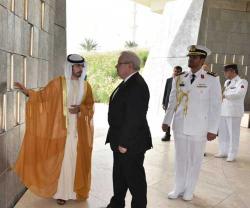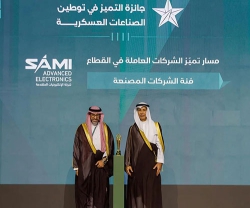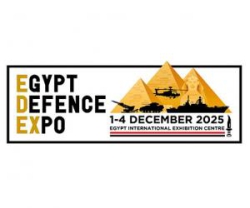DCNS: Gowind Offshore Patrol Vessel
28.10.2010 Europe
At the ongoing Euronaval 2010 Exhibition (Paris, Le Bourget, 25-29 October 2010), French Defence Minister Hervé Morin, French Navy Chief-of-Staff Admiral Pierre-François Forissier, and DCNS Chairman & CEO Patrick Boissier signed an innovative agreement under which DCNS will make a Gowind Offshore Patrol Vessel (OPV) available to the French Navy. The ship is being built under a self-funded DCNS program.
The OPV will be made available to the French Navy for 3 years with a view to achieving ‘sea proven’ and ‘operations qualified’ seals of approval attested by a world-class navy, two key arguments on the international market. The agreement itself represents an innovative form of cooperation between the French government and a private company.
Patrick Boissier, Chairman and CEO of DCNS, said: “I welcome the signing of this agreement. It represents a big step forward for our expansion in smaller displacement warships. The making available of a product built under a self-funded DCNS program is an innovative initiative under our strategic growth plan.”
The French Navy will be able to demonstrate the Gowind OPV’s relevance and operational worth for current and emerging missions, including area surveillance to anti-piracy, counter-terrorism, fisheries policing, drug interdiction, environmental protection, humanitarian aid, search & rescue and maritime safety & security.
With a length overall of 87 metres, the Gowind OPV will offer three weeks’ blue-water endurance, a range of 8,000 nautical miles and a top speed of 21 knots. The design includes full provision for an organic helicopter and reduced crewing by a complement of 30 as well as space for an additional 30 passengers.
This is the entry-level representative of the Gowind family. Other Gowind corvette/OPVs can be equipped with a range of weapon systems according to their mission profiles. The top-of-the-range type is a medium-displacement front-line fighting ship serving as a deterrent or means of preventing military action. To this end, it carries both self-defence and attack weapons for use against land and sea targets as well as resources for force projection in a land-based conflict.
Key Gowind innovations include panoramic (360°) bridge visibility, the covert deployment of fast commando boats in less than 5 minutes and full provision for UAV (unmanned aerial vehicle) operations. All are designed to optimise ship-based naval, commando and coast guard operations. The Gowind family also benefits from DCNS’s vast experience in IT and command information systems. These vessels can thus be readily tailored for extended area surveillance and, working in conjunction with shore-based control centres and other networked ships, the automatic detection of suspicious behaviour by ships and other craft.
Success in the highly competitive corvette/OPV market hinges on the Group’s capacity to improve its overall performance. As part of this effort, DCNS is using the Gowind OPV program to comprehensively review its design and production methods. The ship is being built by a dedicated team of about 80 people (all volunteers to apply new work methods) at the Group’s Lorient centre. The first step was to set up a multidisciplinary multiskills team and give it free rein across the board. The aim is to enable this new structure to build the ship in record time (less than 20 months from first cut to delivery to the customer in the autumn of 2011).
The OPV will be made available to the French Navy for 3 years with a view to achieving ‘sea proven’ and ‘operations qualified’ seals of approval attested by a world-class navy, two key arguments on the international market. The agreement itself represents an innovative form of cooperation between the French government and a private company.
Patrick Boissier, Chairman and CEO of DCNS, said: “I welcome the signing of this agreement. It represents a big step forward for our expansion in smaller displacement warships. The making available of a product built under a self-funded DCNS program is an innovative initiative under our strategic growth plan.”
The French Navy will be able to demonstrate the Gowind OPV’s relevance and operational worth for current and emerging missions, including area surveillance to anti-piracy, counter-terrorism, fisheries policing, drug interdiction, environmental protection, humanitarian aid, search & rescue and maritime safety & security.
With a length overall of 87 metres, the Gowind OPV will offer three weeks’ blue-water endurance, a range of 8,000 nautical miles and a top speed of 21 knots. The design includes full provision for an organic helicopter and reduced crewing by a complement of 30 as well as space for an additional 30 passengers.
This is the entry-level representative of the Gowind family. Other Gowind corvette/OPVs can be equipped with a range of weapon systems according to their mission profiles. The top-of-the-range type is a medium-displacement front-line fighting ship serving as a deterrent or means of preventing military action. To this end, it carries both self-defence and attack weapons for use against land and sea targets as well as resources for force projection in a land-based conflict.
Key Gowind innovations include panoramic (360°) bridge visibility, the covert deployment of fast commando boats in less than 5 minutes and full provision for UAV (unmanned aerial vehicle) operations. All are designed to optimise ship-based naval, commando and coast guard operations. The Gowind family also benefits from DCNS’s vast experience in IT and command information systems. These vessels can thus be readily tailored for extended area surveillance and, working in conjunction with shore-based control centres and other networked ships, the automatic detection of suspicious behaviour by ships and other craft.
Success in the highly competitive corvette/OPV market hinges on the Group’s capacity to improve its overall performance. As part of this effort, DCNS is using the Gowind OPV program to comprehensively review its design and production methods. The ship is being built by a dedicated team of about 80 people (all volunteers to apply new work methods) at the Group’s Lorient centre. The first step was to set up a multidisciplinary multiskills team and give it free rein across the board. The aim is to enable this new structure to build the ship in record time (less than 20 months from first cut to delivery to the customer in the autumn of 2011).
Previous PostNGC at Euronaval
Latest news
Latest events
Dubai International Air Chiefs’ Conference (DIACC 2025)
16 Nov 2025Atlantis, The Palm Dubai - United Arab EmiratesDubai Airshow
17 - 21 Nov 2025Dubai World Central (DWC) - United Arab EmiratesEgypt Defence Expo (EDEX)
01 - 04 Dec 2025Egypt International Exhibition Center New Cairo - EgyptDoha International Maritime Defence Exhibition & Conference (DIMDEX 2026)
19 - 22 Jan 2026Doha - Qatar






















